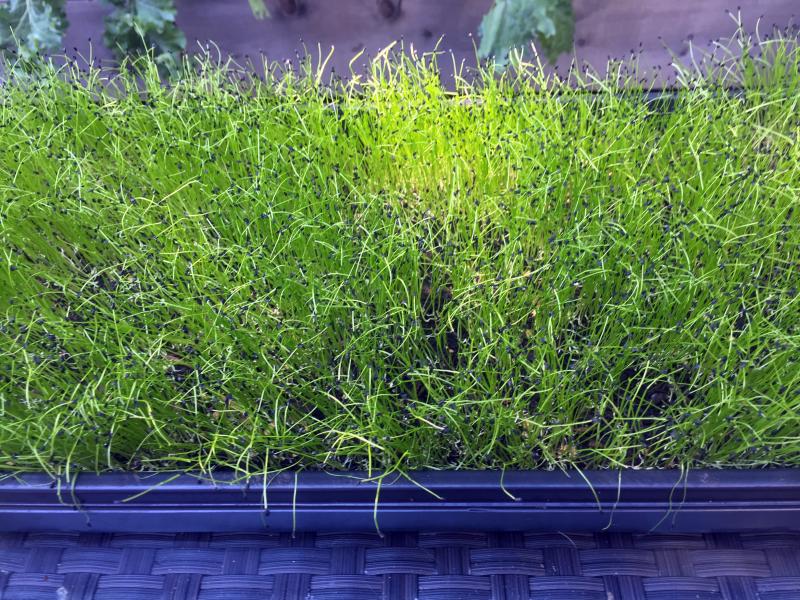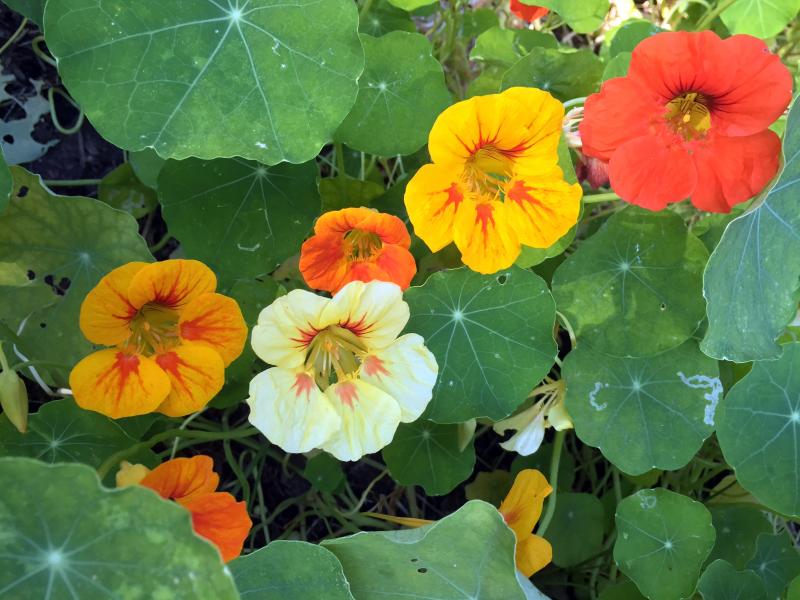They grow microgreens
 Tim Smith and Lisa Evans are growing microgreens and other small novelty plants in the Boston area, and now in South Bristol in their new greenhouse. SUZI THAYER/Boothbay Register
Tim Smith and Lisa Evans are growing microgreens and other small novelty plants in the Boston area, and now in South Bristol in their new greenhouse. SUZI THAYER/Boothbay Register
 One of Lisa Evans’ and Tim Smith’s products is this microgreen and edible flower salad. Healthful and beautiful! SUZI THAYER/Boothbay Register
One of Lisa Evans’ and Tim Smith’s products is this microgreen and edible flower salad. Healthful and beautiful! SUZI THAYER/Boothbay Register
 Tim Smith and Lisa Evans plan to have their new greenhouse in South Bristol up and running, and full of microgreens, by next summer. SUZI THAYER/Boothbay Register
Tim Smith and Lisa Evans plan to have their new greenhouse in South Bristol up and running, and full of microgreens, by next summer. SUZI THAYER/Boothbay Register
 A tray full of We Grow Microgreens’ microgreens. SUZI THAYER/Boothbay Register
A tray full of We Grow Microgreens’ microgreens. SUZI THAYER/Boothbay Register
 Tim Smith and Lisa Evans are growing microgreens and other small novelty plants in the Boston area, and now in South Bristol in their new greenhouse. SUZI THAYER/Boothbay Register
Tim Smith and Lisa Evans are growing microgreens and other small novelty plants in the Boston area, and now in South Bristol in their new greenhouse. SUZI THAYER/Boothbay Register
 One of Lisa Evans’ and Tim Smith’s products is this microgreen and edible flower salad. Healthful and beautiful! SUZI THAYER/Boothbay Register
One of Lisa Evans’ and Tim Smith’s products is this microgreen and edible flower salad. Healthful and beautiful! SUZI THAYER/Boothbay Register
 Tim Smith and Lisa Evans plan to have their new greenhouse in South Bristol up and running, and full of microgreens, by next summer. SUZI THAYER/Boothbay Register
Tim Smith and Lisa Evans plan to have their new greenhouse in South Bristol up and running, and full of microgreens, by next summer. SUZI THAYER/Boothbay Register
 A tray full of We Grow Microgreens’ microgreens. SUZI THAYER/Boothbay Register
A tray full of We Grow Microgreens’ microgreens. SUZI THAYER/Boothbay Register
Lisa Evans and Tim Smith have been growing microgreens in their greenhouse in Roslindale, Massachusetts, since January, ever since Evans became enamored with them after attending the Hippocrates Health Institute in West Palm Beach, Florida.
Now they have a greenhouse in South Bristol as well. It was installed a couple weeks ago, in mid-September.
Evans said she decided to check out the institute after experiencing some physical issues.
“The people who attend eat a raw vegan diet,” she said. “Their philosophy is that if you eat food at its source — the seeds, the roots or the baby plants — you'll get many more nutrients. You don't need meat. You can get all your protein from plant-based sources.”
Evans said when she came back from the institute she was at least partially convinced that she'd eat a raw vegan diet forever.
“I came back with a bunch of seeds and said, 'Tim, grow these.' Tim is an amazing gardener and we have won awards for our urban garden in Boston.”
She said she now eats some meat, but has continued to eat more of a plant-based diet, more vegetables, and a lot of microgreens. “They're good for your hair, for your skin, for nutrients. And I haven't gotten any colds recently.”
Because of the high content of nutrients, Evans said many athletes and cancer patients are buying their microgreens.
“Some cancer patients have lost their appetites, and they are able to get the nutrients they need in a small amount of microgreens. I don't know if they really cure cancer, but it is helping them get a lot of needed nutrients in their diet.”
Their website, We Grow Microgreens (www.wegrowmicrogreens.com), defines microgreens: “Microgreens are tender, edible seedlings of vegetables and herbs grown to the cotyledons (seed leaves) or first true leaf stages. In comparison to their mature plant counterparts, microgreens provide approximately five times more vitamins and carotenoids.
According to Smith, microgreens have 4 to 40 times the nutrient density of mature leaves.
“They are exceptionally high in vitamin C and other vitamins, and/or antioxidents. It's an exceptional way of getting nutrients into your system. And they can be grown year-round.”
The microgreens are grown in organic soil in trays. When the time comes for harvesting them, Smith said they either sell the entire tray, or cut the greens and package them in 'clamshell' containers.
They are made available separately in small containers, and can also be purchased as a mixture of greens in larger containers as a salad in itself.
“We tell consumers that they can add a light balsamic vinegar dressing, and they'll have a simple, very nutritious salad,” Smith said.
Edible flowers are added to the containers, providing beauty to the already colorful microgreens: Pansies, French marigolds and nasturtiums.
“People love the edible flowers,” Smith said.
There is little waste in the business of growing microgreens. Smith said that once the tray of greens is harvested, they throw the soil with the residue 'compost' into larger planters, and as a result large, mature plants grow. Smith said that their compost heap is always full of surprises. “You might get some vegetables growing that you can take and plant in your garden beds.”
There are planters virtually everywhere on the deck and dock of Smith's family's summer cottage in South Bristol. The planters contain kale, peas, amaranth, cilantro, and shiso (an herb).
In addition to microgreens, the couple also grows and sells small novelty plants, including coffee plants that produce Arabica coffee beans. “They're wonderful houseplants,” Smith said.
If anyone is interested in growing their own microgreens, Smith said it's easy. “The best local source would be Johnny's Seeds in Albion. They have a wonderful catalog, and you can buy a small batch of seeds and the requisite flats, and grow microgreens on your kitchen windowsill all winter long.”
The couple participates in four farmers markets in the Boston area and their microgreens are in two grocery stores and a few restaurants. But they're excited about their new venture in South Bristol.
“We're really constrained for space in the Boston area,” Smith said. “Even though the city has promoted urban farming, the problem is finding good space to grow in the earth, or in a greenhouse. So we put a greenhouse here, where we already have land.”
Now they can grow microgreens in this area, and take them back to Boston. If there is a restaurant or chef around here who wants them, they will be happy to provide them.
“I have this amazingly beautiful house here, and I spend a lot of time here by myself, because Tim is afraid to leave the microgreens in Boston by themselves,” Evans said.
“They could get in trouble on their own,” Smith piped in.
Event Date
Address
United States




























